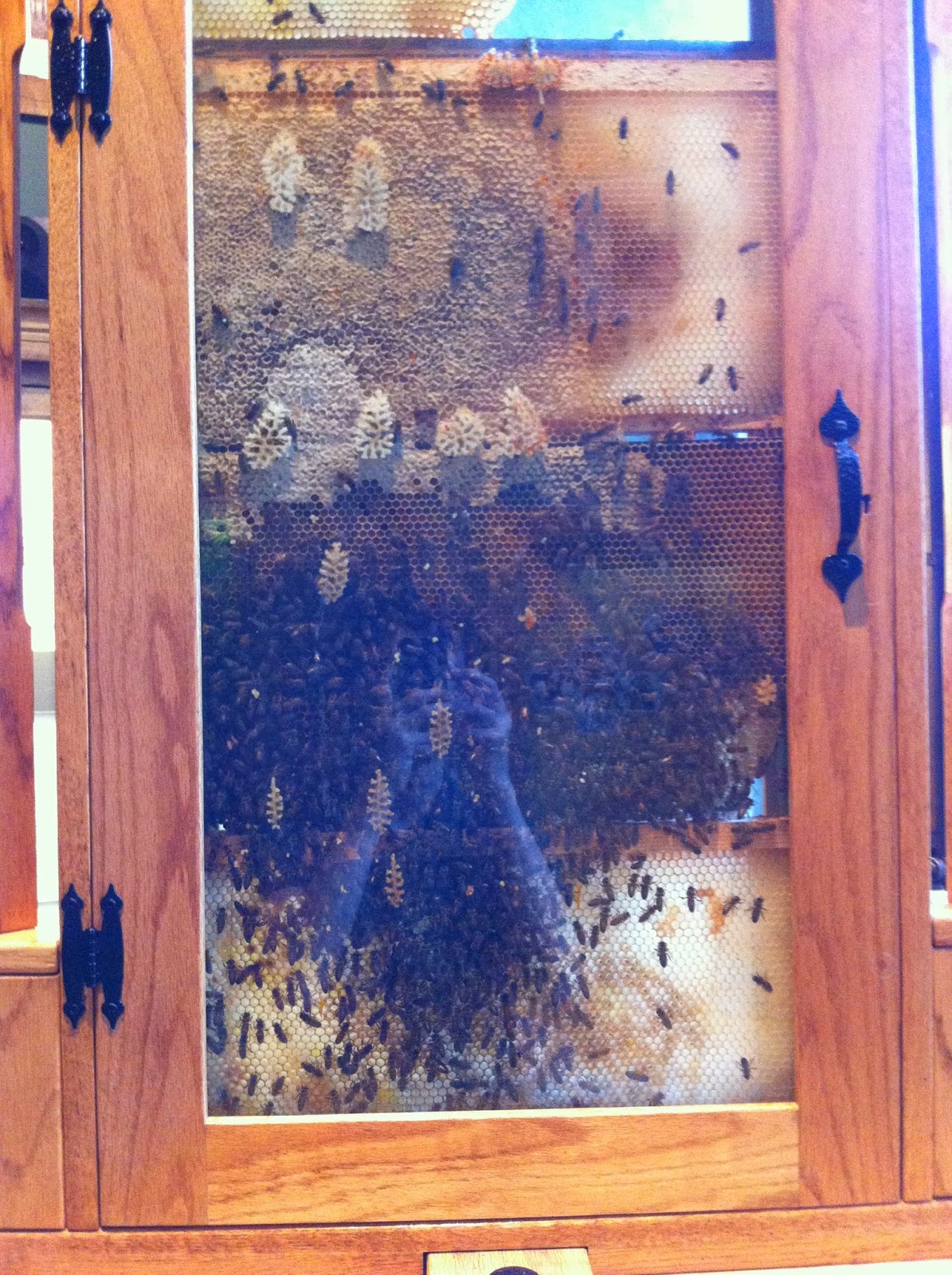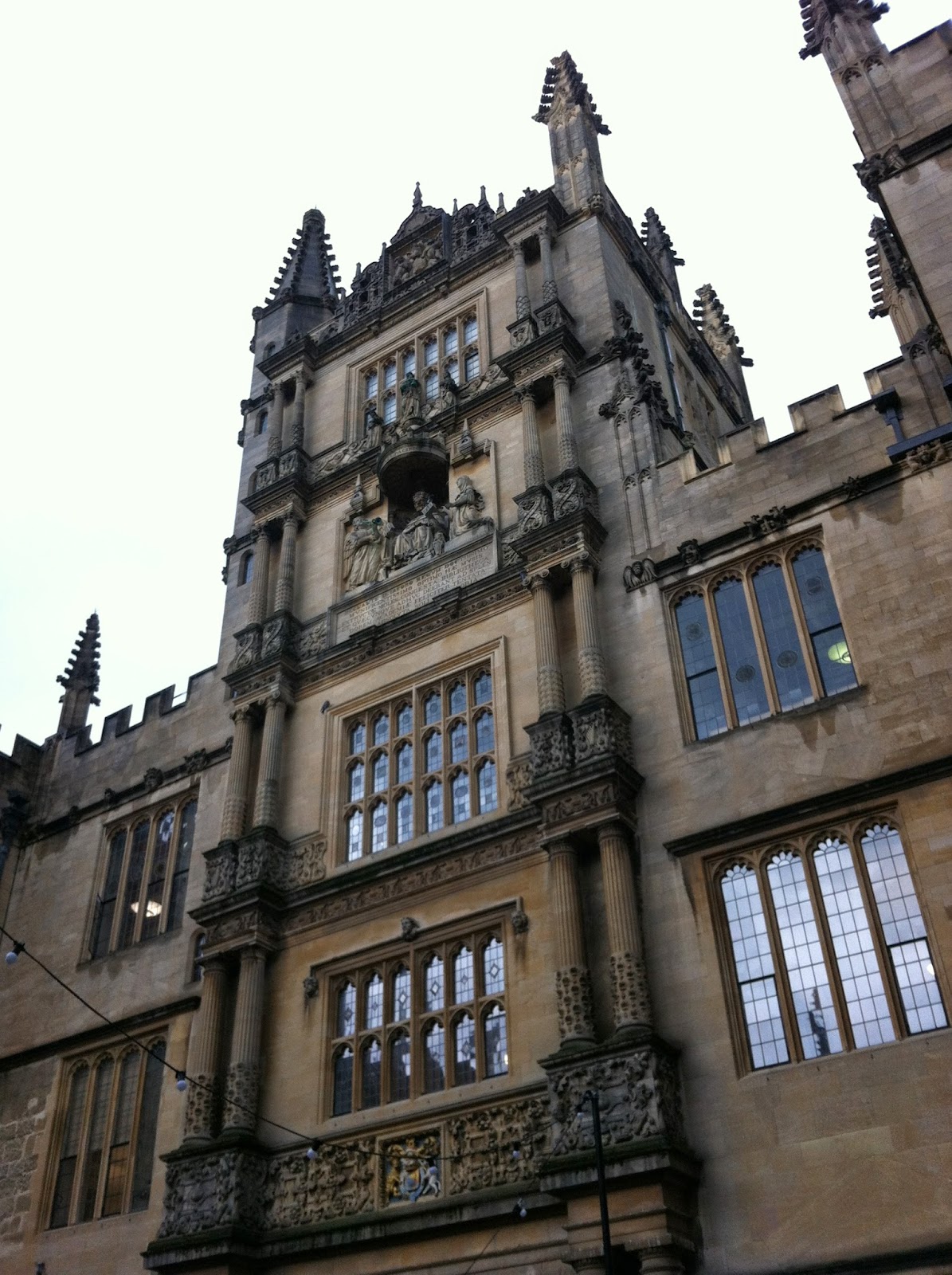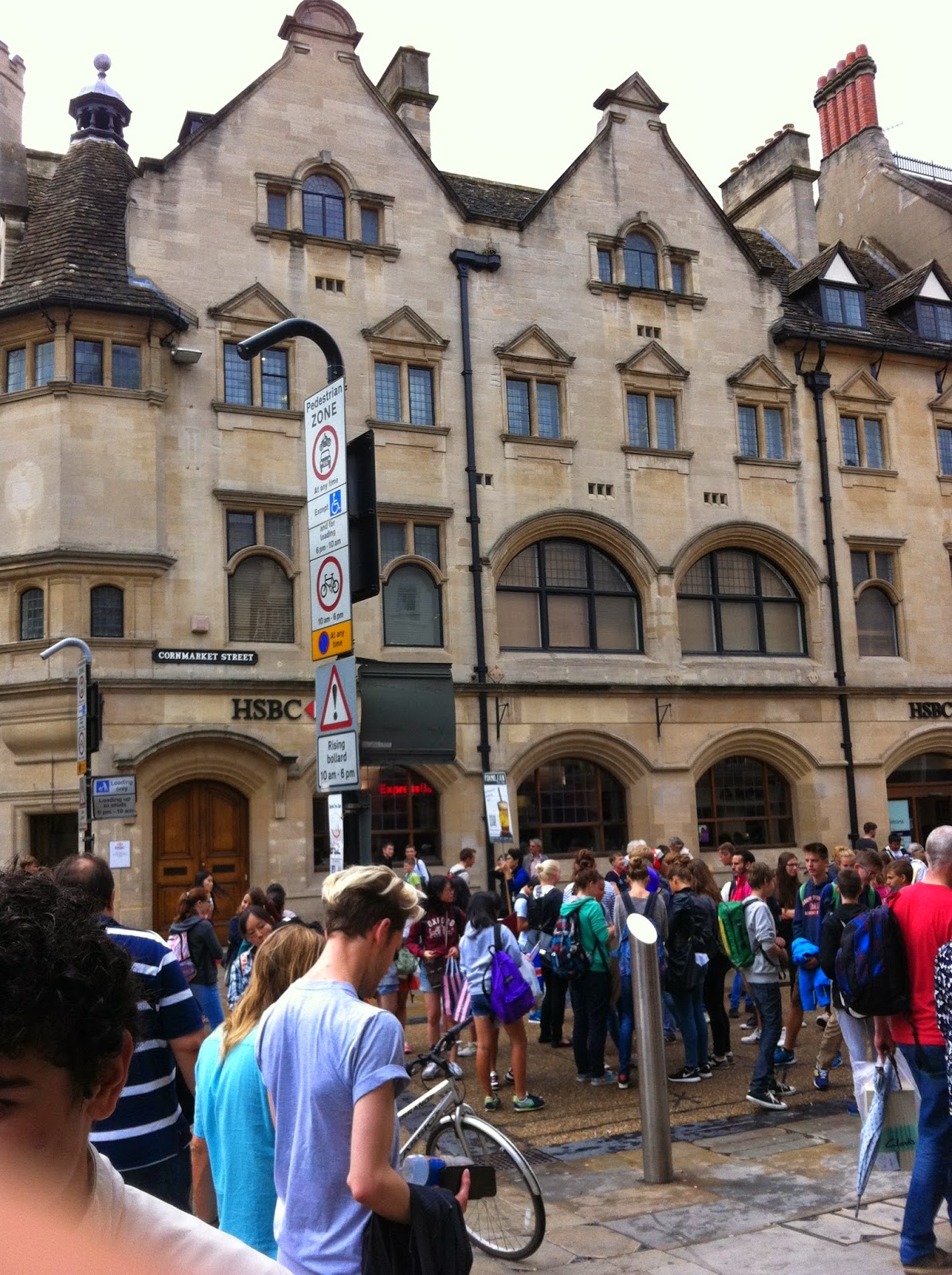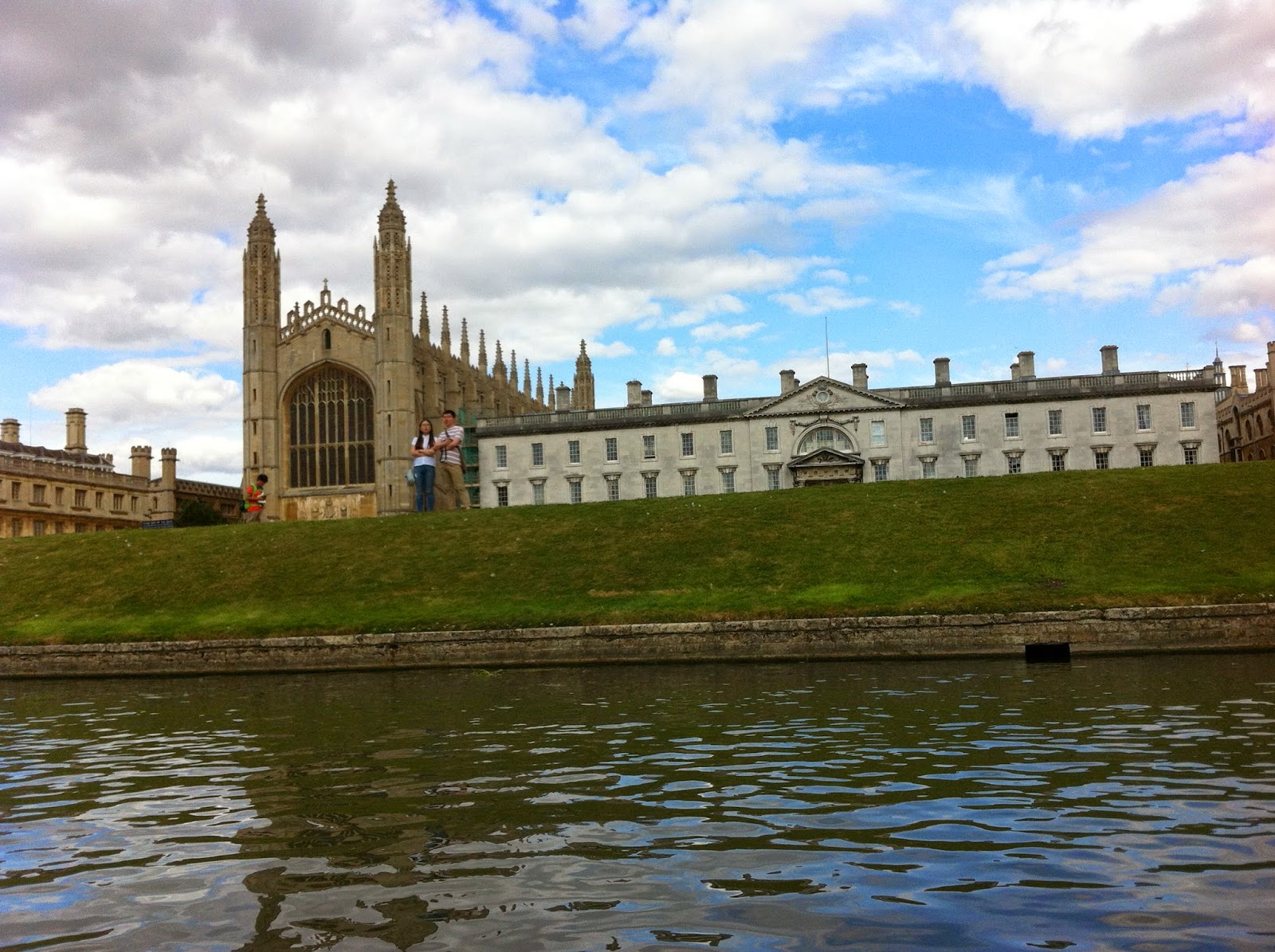As part of my last weekend in London, I visited both Oxford and Cambridge, to see what all the fuss is about.
Oxford
Founded: 1096 or earlier
Population: 12,000 undergrads, 10,000 grads
Nobel Prizes: 47
Pitt Rivers:
Pipes and snuff boxes around the world. People find creative ways to do drugs:
Seal-gut poncho:
Lutes:
Flutes:
Guns:
Shields:
Assorted:
Small horse ancestor:
View from the top:
The obligatory dinosaur bones:
Shrunken heads. These are actually monkey heads that are dressed up to resemble enemies that they killed. Apparently taking the heads of your enemies and humiliating them in death was a popular ritual of many cultures:
Lovely English suburban houses:
Bodleian Library, one of the oldest libraries in Europe:
Radcliffe Camera, a side library:
The busy street:
Keep off the grass:
Seems like lots of buildings were about to fall down:
The overall feel of Oxford (other than that it's overrun by tourists) is one of scholarly secrecy and stuffiness. Of course, it could be that the rain made it drearier that it really is.
Founded: 1209
Population: 18,000 undergrads, 12,000 grads
Nobel Prizes: 90
I had the good fortune of visiting Cambridge on a sunny day:
Christ's College, most famous alumnus is Darwin:
Still can't step on the grass:
Display of Darwin's life:
Gonville and Caius College, one of the smallest and wealthiest Colleges, claiming Francis Crick, James Watson, James Chadwick, Howard Florey, and Stephen Hawking (post-retirement):
Center of the city:
Senate House, used for degree ceremonies:
King's College:
Going punting, an activity where you sit in a flat bottomed boat while a person stands on the rear of the boat steering. Since the river is shallow, the "driver" steers and moves the boat by poking the bottom of the river using a long stick.
The "Mathematical Bridge", a supposedly great feat of engineering:
Trinity Hall:
Trinity College from the front. This is the largest College and one of the most famous, claiming Isaac Newton, Niels Bohr, James Maxwell, Srinivasa Ramanujan, Charles Babbage, Francis Bacon, Ernest Rutherford, Prince William and Price Charles, etc.:
It's amazing how both Oxford and Cambridge are able to produce so many great people throughout history. Their ancient buildings and sense of intense scholarship seem to be timeless. However, I am quite glad I've gotten to study in London, where there is not such a sense of isolation beyond the University.

















































































No comments:
Post a Comment